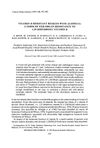Rickets and Alopecia with Resistance to 1,25-Dihydroxyvitamin D: Two Different Clinical Courses with Two Different Cellular Defects
TLDR Patients with this syndrome can have different responses and worsening resistance to treatment over time.
Two unrelated children with alopecia and rickets resistant to 1,25-dihydroxyvitamin D (vitamin D-dependency type II) were treated with high doses of vitamin D3 derivatives for extended periods. Despite high serum levels of 1,25-(OH)2D, one child showed no improvement, with her skin fibroblasts displaying low nuclear uptake of the vitamin. The other child initially responded well but relapsed after 6 years, with her fibroblasts showing unmeasurable nuclear uptake. The study concluded that patients with this syndrome can exhibit different clinical responses and cellular defects, and resistance to treatment may worsen over time.
